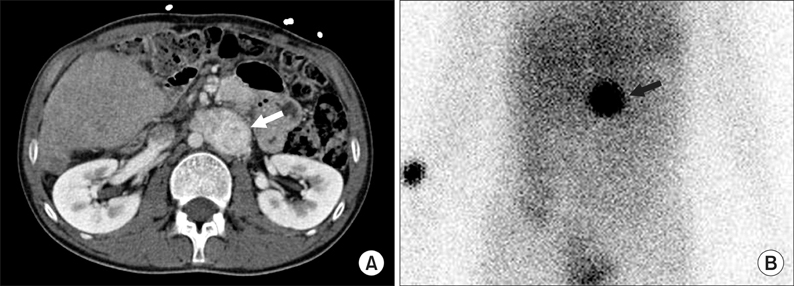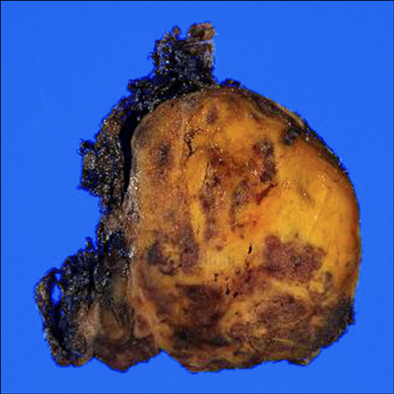J Korean Surg Soc.
2012 Jul;83(1):65-68. 10.4174/jkss.2012.83.1.65.
Extra-adrenal pheochromocytoma after operation of congenital heart disease: a case report of 18-year-old boy
- Affiliations
-
- 1Department of Surgery, Seoul National University Hospital, Seoul, Korea.
- 2Department of Pediatric Surgery, Seoul National University Children's Hospital, Seoul, Korea. spkhy02@snu.ac.kr
- KMID: 2212282
- DOI: http://doi.org/10.4174/jkss.2012.83.1.65
Abstract
- Extra-adrenal pheochromocytoma is rare and presents variable symptoms. Its difficulty to diagnosis delays appropriate treatment. We would like to report an unusual case of extra-adrenal pheochromocytoma. The patient came to the emergency room with dyspnea, palpitation, and cyanosis. He had a history of hospitalization for Fontan operation due to congenital heart disease. Despite medication, his blood pressure remained high. After additional laboratory and image exams, he was diagnosed with extra-adrenal pheochromocytoma and had surgical treatment. The final pathology report was extra-adrenal pheochromocytoma with high risk of malignancy. The postoperative course was uneventful and showed normal laboratory results even after 3 months of outpatient follow-up. Extra-adrenal pheochromocytoma presents variable symptoms. We should consider endocrinologic diseases like extra-adrenal pheochromocytoma in cases presenting with palpitation and high blood pressure, even with a past history of cardiac surgery.
MeSH Terms
Figure
Reference
-
1. Marelli AJ, Mackie AS, Ionescu-Ittu R, Rahme E, Pilote L. Congenital heart disease in the general population: changing prevalence and age distribution. Circulation. 2007. 115:163–172.2. Pham TH, Moir C, Thompson GB, Zarroug AE, Hamner CE, Farley D, et al. Pheochromocytoma and paraganglioma in children: a review of medical and surgical management at a tertiary care center. Pediatrics. 2006. 118:1109–1117.3. Townsend CM, Beauchamp RD, Evers BM, Mattox KL. Sabiston textbook of surgery: the biological basis of modern surgical practice. 2007. 18th ed. Philadelphia: Elsevier Saunders.4. Yoshida T, Ishihara H. Pheochromocytoma presenting as massive hemoptysis and acute respiratory failure. Am J Emerg Med. 2009. 27:626.e3–626.e4.5. Park SJ, Kim YS, Cho HR, Kwon TW. Huge carotid body paraganglioma. J Korean Surg Soc. 2011. 81:291–294.6. Sinha S, Sharma MC, Sharma BS. Malignant paraganglioma of the sellar region mimicking a pituitary macroadenoma. J Clin Neurosci. 2008. 15:937–939.7. Bhattacharya A, Mittal BR, Bhansali A, Radotra BD, Behera A. Cervical paraganglioma mimicking a parathyroid adenoma on Tc-99m sestamibi scintigraphy. Clin Nucl Med. 2006. 31:234–236.8. Wu MH, Chen HC, Lu CW, Wang JK, Huang SC, Huang SK. Prevalence of congenital heart disease at live birth in Taiwan. J Pediatr. 2010. 156:782–785.9. de la Monte SM, Hutchins GM, Moore GW. Peripheral neuroblastic tumors and congenital heart disease. Possible role of hypoxic states in tumor induction. Am J Pediatr Hematol Oncol. 1985. 7:109–116.10. Kelley SR, Goel TK, Smith JM. Pheochromocytoma presenting as acute severe congestive heart failure, dilated cardiomyopathy, and severe mitral valvular regurgitation: a case report and review of the literature. J Surg Educ. 2009. 66:96–101.




